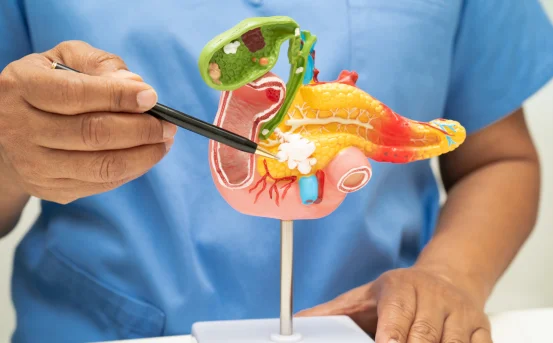Cystectomy is a major surgical procedure that involves the removal of all or part of the urinary bladder. It is most commonly performed to treat bladder cancer, but it may also be required for other conditions such as interstitial cystitis, severe bladder trauma, or congenital abnormalities. As a complex and life-altering surgery, cystectomy requires thorough understanding and careful planning.
What is Cystectomy Surgery?
The bladder is a hollow, muscular organ located in the pelvis. It stores urine produced by the kidneys until it is expelled from the body during urination. The health of the bladder is essential for normal urinary function and overall well-being.
When diseases such as cancer damage the bladder beyond repair or when symptoms from other chronic conditions become unmanageable, removal of the bladder may be considered.
Types of Cystectomy
There are several types of cystectomy, and the choice depends on the patient’s condition, age, overall health, and the extent of disease. The three main types are:
- Partial Cystectomy :- In a partial cystectomy, only a portion of the bladder is removed. This is typically an option when a tumor is small, localized, and has not spread to other parts of the bladder wall. The remaining portion of the bladder is then repaired and continues to function, though sometimes at reduced capacity.
- Radical Cystectomy :- Radical cystectomy involves the complete removal of the bladder. In men, this surgery often includes removal of the prostate and seminal vesicles. In women, it may involve removal of the uterus, ovaries, fallopian tubes, and a portion of the vaginal wall. This is the most common surgery for invasive bladder cancer.
Laparoscopic or Robotic-Assisted Cystectomy
Minimally invasive techniques such as laparoscopic or robotic-assisted cystectomy are increasingly used. These methods use small incisions and specialized tools, often resulting in shorter recovery times, less bleeding, and fewer complications compared to traditional open surgery.
Who Needs a Cystectomy?
The most common reason for undergoing a cystectomy is bladder cancer, particularly muscle-invasive bladder cancer or recurrent high-grade non-invasive cancer that does not respond to other treatments. Other indications include:
- Severe trauma to the bladder
- Neurological diseases causing bladder dysfunction
- Radiation injury to the bladder
- Intractable pain or bleeding from chronic bladder inflammation
A team of specialists, including urologists and oncologists, usually evaluates patients to determine whether cystectomy is necessary.
Preparing for Cystectomy Surgery
Preparation for cystectomy involves several steps to ensure the patient is ready both physically and mentally. These may include:
- Blood tests and imaging studies such as CT scans or MRIs
- Cystoscopy to assess the bladder’s condition
- Cardiovascular evaluation to ensure surgical fitness
- Discussions with a surgeon about the procedure, options, risks, and outcomes
Many hospitals also offer pre-surgery counseling or “prehab” programs to help patients strengthen their bodies before undergoing major surgery.
Urinary Diversion Options After Cystectomy
When the bladder is removed, a new way to store and eliminate urine must be created. This is called urinary diversion. There are three main types:
- Ileal Conduit :- This is the most common form of urinary diversion. A small piece of the small intestine is used to create a passageway (conduit) that connects the ureters to an opening in the abdominal wall, known as a stoma. Urine flows into an external pouch worn on the outside of the body.
- Neobladder Reconstruction :- A neobladder is a surgically created bladder made from a segment of the intestine. It is connected to the urethra, allowing patients to urinate normally through the urethra, although some may experience issues with continence or require catheterization.
- Continent Cutaneous Reservoir :- This method creates an internal pouch from intestinal tissue that stores urine. The pouch is connected to the skin via a stoma, but unlike the ileal conduit, patients can empty it at regular intervals using a catheter. It avoids the need for an external bag.
The choice of urinary diversion depends on multiple factors including the patient’s health, age, personal preference, and surgeon’s expertise.
What Happens During the Surgery?
Cystectomy is performed under general anesthesia. The procedure may take between 4 to 8 hours depending on its complexity and whether urinary diversion is performed at the same time.
In a radical cystectomy:
- The surgeon makes an incision (or uses laparoscopic instruments) to access the bladder.
- The bladder and nearby organs or tissues are removed.
- Lymph nodes are typically dissected to check for the spread of cancer.
- The chosen urinary diversion method is constructed.
- Surgical drains and catheters are placed to help with healing.
Recovery and Hospital Stay
Patients typically stay in the hospital for about 5 to 10 days after a cystectomy. During this time, the medical team monitors for complications such as infection, bleeding, or blood clots. Pain management, nutrition support, and physical activity are essential components of early recovery.
Once at home, patients are encouraged to:
- Gradually increase activity levels
- Follow a special diet if recommended
- Care for their surgical wounds and stoma (if applicable)
- Keep up with follow-up appointments
Full recovery can take 6 to 12 weeks, although it varies by individual.
Risks and Complications
As with any major surgery, cystectomy carries risks. These may include:
- Bleeding and infection
- Blood clots
- Damage to nearby organs
- Complications related to anesthesia
- Sexual dysfunction
- Urinary incontinence or difficulty with urinary diversion
Long-term lifestyle changes and emotional adjustment are also important aspects of the post-surgery experience.
Life After Cystectomy
Living without a natural bladder can be challenging, but most patients adapt well over time with proper support. Learning to manage a urinary diversion, whether it involves a stoma or catheterization, is key to maintaining quality of life.
Patients may also need to make adjustments in their diet, physical activity, and sexual health. Support groups and counseling services can provide invaluable help during recovery and beyond.
Ongoing follow-up care is essential, especially for those with bladder cancer, to monitor for recurrence or new health issues.
Conclusion
Cystectomy is a life-changing surgery that can offer relief from debilitating symptoms or provide a potential cure for bladder cancer. While the idea of bladder removal may seem daunting, medical advances have made the procedure safer, and there are now several options to help patients manage their urinary function after surgery.
Understanding the procedure, preparing thoroughly, and having a strong support system can make a significant difference in outcomes. If you or a loved one are facing cystectomy, consult with a qualified urologist to explore the best path forward tailored to your individual needs.






















